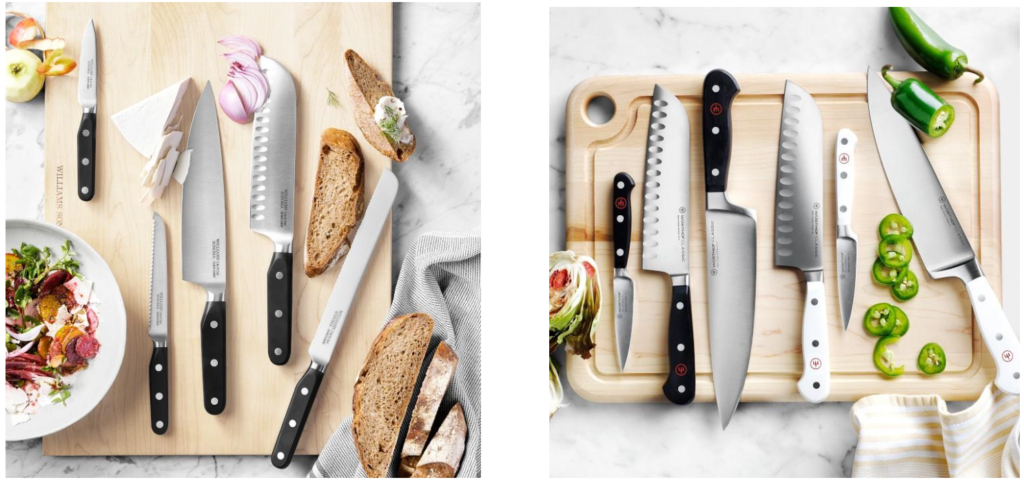“Unleashing Culinary Craftsmanship: The Ultimate Handbook on Chef Knives – Elevate Your Kitchen Skills with the Perfect Blade, Precision Techniques, and Culinary Excellence!”

In the bustling symphony of a kitchen, the chef’s knife emerges as the virtuoso, a versatile maestro who orchestrates culinary creations with precision and finesse. Beyond its role as a mere cutting tool, the significance of a chef’s knife lies in its ability to become an extension of the chef’s hand, transforming ingredients into works of culinary art. Choosing the right chef’s knife becomes a crucial decision, akin to selecting the perfect instrument for a skilled musician.
Anatomy of a Chef Knife
The chef’s knife, a harmonious blend of blade, handle, bolster, and tang, possesses a carefully crafted anatomy that contributes to its unparalleled functionality. Understanding each component’s role unveils the seamless symphony of motion and control inherent in a well-designed chef’s knife.
Types of Chef Knives
Dive into the realm of chef knives, distinguishing between the versatile chef’s knife, the nimble Santoku, and the utility knife tailored for specific tasks. Specialized chef knives cater to unique culinary needs, providing the perfect tool for every cutting endeavor.
Materials Used for Chef Knives
The diverse world of knife materials, from the resilience of stainless steel to the razor-sharp edge of carbon steel and the artistry of Damascus steel. Each material brings its character to the kitchen, influencing the knife’s performance and longevity.

Choosing the Right Chef Knife
Selecting the perfect chef’s knife involves a dance between size, weight, and balance. Tailor your choice to your cooking style, whether you’re a culinary artist seeking precision or a home cook aiming for efficiency. The right chef’s knife becomes a trusted ally, enhancing your culinary prowess.
Chef Knife Maintenance
To maintain knives, regularly hone the blade using a sharpening rod to keep it sharp, and hand wash with mild detergent and warm water to preserve the edge. Avoid the dishwasher and use a wooden or plastic cutting board to prevent dulling.
Popular Chef Knife Brands
- Wusthof Renowned for their precision and durability, Wusthof chef knives are crafted with high-carbon stainless steel blades, providing exceptional cutting performance and balance.
- Shun: Exemplifying Japanese craftsmanship, Shunchef knives are prized for their razor-sharp edges and elegant Damascus patterns, delivering precision and style in every cut.
- Global: With a distinctively sleek design and a commitment to high-quality materials, Global Chef knives are celebrated for their razor-sharp blades and lightweight yet well-balanced construction.
Special Features of Chef Knives
Discover knives adorned with unique features, such as the Granton edge for reduced friction, full tang for enhanced durability, and ergonomic handles for optimal grip. Unravel how these features elevate the chef’s knife, turning it into a precision instrument.

Chef Knife Safety
Always handle knives with a firm grip and keep fingers away from the blade. When cutting, use a controlled rocking motion and ensure a stable cutting surface for enhanced safety in the kitchen.
Uses of Chef’s Knife
The chef knife, a culinary workhorse, boasts a versatile design with a sharp, broad blade, making it the go-to tool for precision slicing, dicing, and chopping in the kitchen. Its ergonomic handle ensures a comfortable grip, allowing chefs to execute intricate maneuvers with ease and efficiency.
In summary, the chef’s knife is not merely a tool but a companion in the culinary journey, a reliable ally that can elevate your cooking to new heights. Invest in the right chef’s knife, understanding its anatomy, materials, and maintenance requirements. Embrace the symphony of features and specializations, and let the chef’s knife become an extension of your culinary artistry, transforming every ingredient into a masterpiece on the plate.




![Snapchat Spectacles (5th Gen) [Top Features Unveiled] [2024] Snapchat Spectacles](https://barefootclimb.com/wp-content/uploads/2024/10/Snapchat-Spectacles-150x150.jpg)






One thought on “The Ultimate Buying Guide to Chef Knives: Types, Materials, Brands & Safety Tips”